For over 4 centuries racing has been staged in Newmarket, but how have the racecourses evolved from an initial starting point at Fleam Dyke Pumping Station, some 8 miles from the town, with a winning post barely 200 metres from the town centre, into two world recognized, excellent racecourses and a universal acceptance that Newmarket is the Headquarters of racing?
To access an interactive racecourse map showing over 50 individually named racecourses CLICK HERE. The map will enable you to:-
1. Determine when extended races over 8 miles, 6 miles and 4 miles began to be replaced by the courses now visited by thousands annually;
2. Consider how the challenge of crossing the Devil's Dyke was overcome;
3. Contemplate why the town no longer has a steeplechase course despite having at least 5 courses during the past 2 centuries;
4. Examine the practicalities of having up to 48 starting posts and winning posts;
5. Appreciate that it was not financially viable to have an open racecourse spread widely across the heath, with a finishing post barely 200 metres from the town centre;
6. Research how and why the Cambridgeshire Handicap has been contested over 3 different courses.
NOTE: The map does not make mention of 2 particular courses:-
(i) Sefton Course (also known as the Cambridge Road Course)
Source: 1970 Raceform.Used from 1959 to 1975.
(ii) New Circular Course
The Circular Handicap was run on Friday 29th October 1875 on the New Circular Course of about two miles.
Source: London Standard (30th October 1875): ''the horses started near the Turn of the Lands, ran back way of the Cambridgeshire Course towards the Ditch, and afterwards proceeded down the side of the Tan Gallop, and turned into the Rowley Mile near the Bretby Stakes starting post, finishing at the stand at the end of the flat. Except in the hollow near the Cambridgeshire start the runners should have been visible all the way if the sky had been bright and clear''.
Another report hoped that the Circular Handicap would become a feature in future programmes, as it would be contested in front of the new grandstand which would be completed in about a year and would be able to accommodate thousands.
(I am grateful to Tim Cox for bringing attention to these 2 courses.)
Enjoy researching the intriguing history of Newmarket and its many racecourses.
James Robinson, more often known as Jem, the son of John Robinson who trained racehorses in Newmarket for Mr Paton, was born on 22nd June 1794 and rode out with the string from a very early age. He developed into one of the best riders of his generation and one of the greatest of Classic winning jockeys of all time. He was only 22 when he won his first Epsom Derby aboard Azor in 1817, and went on to claim a further 23 Classic victories. The Baldwin's London Weekly Journal of Saturday 12th June 1824 reported a remarkable bet which Jem had made, stating that he would win the Epsom Derby, Epsom Oaks and be married all before Sunday 6th June 1825. He duly won the Derby aboard Cedric on Thursday 3rd June 1824, followed up by winning the Oaks aboard Cobweb on Friday 4th June 1825, and married Elizabeth Powell on Saturday 5th June, thus landing his bet with a day to spare.
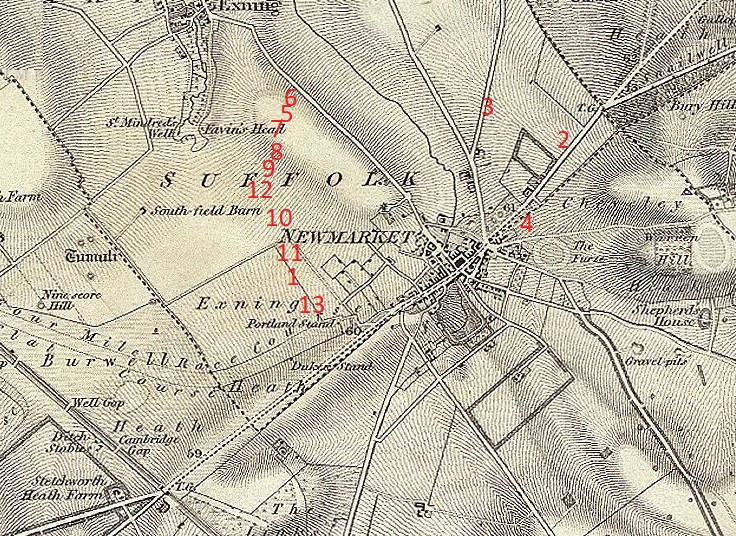
The couple eventually bought Rutland Place in Newmarket and made it their family home. He rode the winner of the Epsom Derby on a further 4 occasions, in 1825 on Middleton, in 1827 on Mameluke, the next year on Cadland after the horse initially dead-heated, and finally in 1836 aboard Bay Middleton. Of his other Classic successes, he won the Oaks and St Leger twice, the 2000 Guineas 9 times and the 1000 Guineas 5 times. In 1852 Jem, riding Lord Clifden's 2-y-o Feramorz, experienced a broken stirrup leather which left him twisted, with 3 broken ribs, his left thigh and clavicle broken and one leg 4 inches shorter than the other. He was forced to lead an abstemious life for the next 21 years, and was never active thereafter. He died at Rutland Place on 15th January 1873 aged 78, survived by his wife who died on 7th March 1879. Two months later Rutland Place was bought by Fred Archer and Charles Archer was installed as trainer.
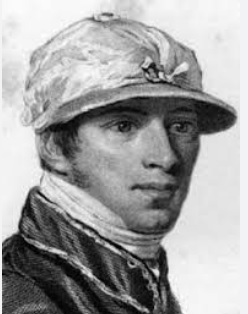
1817 Epsom Derby AZOR (SR 2030) 5/1 owned by John Payne, trained by Robert Robson and ridden by Jem Robinson
1821 Epsom Oaks AUGUSTA (SR 1979) 20/11 fav owned by 2nd Marquess of Exeter, trained by Richard Prince jnr and ridden by Jem Robinson
1824 Epsom Derby CEDRIC (SR 2046) 9/2 owned by Sir John Shelley, trained by James Edwards and ridden by Jem Robinson
1824 Epsom Oaks COBWEB (SR 2032) 8/11 fav owned by 5th Earl of Jersey, trained by James Edwards and ridden by Jem Robinson
1825 2000 Guineas ENAMEL (SR 1970) 7/4 fav owned by 2nd Marquess of Exeter, trained by Charles Marson and ridden by Jem Robinson
1825 Epsom Derby MIDDLETON (SR 2031) 7/4 fav owned by 5th Earl of Jersey, trained by James Edwards and ridden by Jem Robinson
1827 Epsom Derby MAMELUKE (SR 2030) 9/1 owned by 5th Earl of Jersey, trained by James Edwards and ridden by Jem Robinson
1827 St Leger MATILDA (SR 1941) 11/1 owned by Edward Petre, trained by John Scott and ridden by Jem Robinson
1828 2000 Guineas CADLAND (SR 2016) 5/2 owned by Duke of Rutland, trained by Dixon Boyce and ridden by Jem Robinson
1830 1000 Guineas CHARLOTTE WEST (SR 1845) 5/1 owned by 5th Earl of Jersey, trained by James Edwards and ridden by Jem Robinson
1831 2000 Guineas RIDDLESWORTH (SR 2035) 1/5 fav owned by 5th Earl of Jersey, trained by James Edwards and ridden by Jem Robinson
1832 St Leger MARGRAVE (SR 2015) 8/1 owned by John Gully, trained by John Scott and ridden by Jem Robinson
1833 2000 Guineas CLEARWELL (SR 1985) 5/4 fav owned by 3rd Earl of Orford, trained by John Hart and ridden by Jem Robinson
1834 2000 Guineas GLENCOE (SR 1939) 6/1 owned by 5th Earl of Jersey, trained by James Edwards and ridden by Jem Robinson
1835 2000 Guineas IBRAHIM (SR 2031) 1/7 fav owned by 5th Earl of Jersey, trained by James Edwards and ridden by Jem Robinson
1836 2000 Guineas BAY MIDDLETON (SR 2062) 4/6 fav owned by 5th Earl of Jersey, trained by James Edwards and ridden by Jem Robinson
1836 Epsom Derby BAY MIDDLETON (SR 2062) 7/4 fav owned by 5th Earl of Jersey, trained by James Edwards and ridden by Jem Robinson
1844 1000 Guineas SORELLA (SR 1904) 10/1 owned by George Osbaldeston, trained by William Butler jnr and ridden by Jem Robinson
1847 2000 Guineas CONYNGHAM (SR 1951) 4/1 owned by Sir Robert Pigot, trained by John Day and ridden by Jem Robinson
1848 2000 Guineas FLATCATCHER (SR 1950) 4/1 owned by B Green, trained by Henry Stebbing and ridden by Jem Robinson
Charles Archer, son of a Grand National winning rider and brother of the most famous jockey of all time, was born on 22nd December 1858 at Sydney House, Prestbury. His parents had moved from their livery yard in Cheltenham earlier in the year on the back of William Archer's success on Little Charley 100/6 at Aintree, the horse being owned by Christopher Capel and trained by William Holman. Charles was destined to become a jockey, and was well-equipped to then go on to train. He was apprenticed at Heddington to Anthony Cowley, private trainer to Teddy Brayley, completing his apprenticeship in April 1875 before moving to Henry Savile's Newmarket stables where William Gilbert trained. In an unspectacular riding career he managed 12 wins under National Hunt rules, but was successful in the 1878 Austrian Derby, although it became obvious that his time as a jockey was limited given his increasing weight. He launched his new career training for Mr Arthur Cooper, a commission agent who also owned the 1885 Aintree Grand National winner Roquefort when trained by Arthur Yates. Later he trained for Fred Gretton at his Granby Street, Newmarket stables, but he got his big break in late 1879 when Lord Ellesmere appointed him to train at Rutland Place after he bought a share of it from Fred Archer. Lord Ellesmere invested a great deal of money to redevelop Rutland Place, increasing its stable capacity and renaming it Ellesmere House when it was completed in 1883. The financial arrangement between Lord Ellesmere and Archer was an extremely odd one, with Ellesmere, not a particularly involved owner, leaving the entire management of the horses up to the trainer who apparently charged no fees. Charles Archer enjoyed some success, winning the 1882 November Handicap with Boswell, the 1882 Manchester Cup with Wallenstein, and the 1882 Stewards Cup with Lowland Chief.

1882 Stewards Cup at Glorious Goodwood LOWLAND CHIEF 10/1 owned by Lord Ellesmere, trained by Charles Archer and ridden by Fred Webb
1882 Manchester Cup WALLESTEIN 6/1 owned by Lord Ellesmere, trained by Charles Archer and ridden by Charles Wood
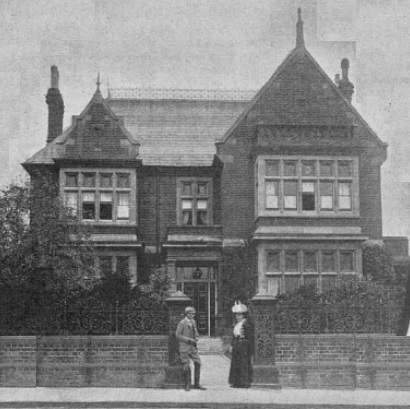
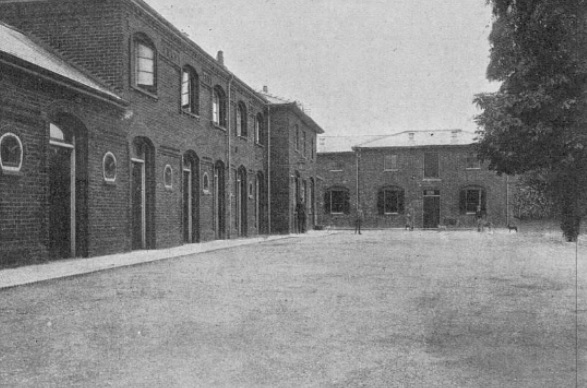
1882 Manchester November Handicap BOSWELL 100/15 owned by Lord Ellesmere, trained by Charles Archer and ridden by Lemaire
1883 Liverpool Autumn Cup BOSWELL 100/15 owned by Lord Ellesmere, trained by Charles Archer and ridden by Charles Wood
1891 Irish Derby at the Curragh NARRAGHMORE 4/5 fav owned by John D Wardell, trained by Charles Archer and ridden by Thomas Beasley
1892 Duke of York Stakes at Kempton MISS DOLLAR 1000/15 owned by J W Smith, trained by Charles archer and ridden by Richard Chaloner
1893 Lincoln Handicap at Lincoln WOLFS CRAG 20/1 owned by J W Smith, trained by Charles Archer and ridden by Walter Bradford
1900 Lincoln Handicap at Lincoln SIR GEOFFREY 100/12 owned by H Barnato, trained by Charles Archer and ridden by Mornington Cannon
1904 Cheveley Park Stakes at Newmarket GALANTINE evens fav owned by Ernest Dresden, trained by Charles Archer and ridden by Otto Madden
1913-1914 Charles Edward Archer
Charles Edward Archer, second son of Charles Archer, and nephew of jockey Fred Archer, was known as Charles Archer the younger and was born in Newmarket in 1883, making his debut as a rider in October 1896, although he was only given a small number of rides.He celebrated his first winner, almost a year after his first ride, on Primrose Hill at Kempton on 11 August 1897 and in January 1901 he moved to Beverley House as second head lad to Blackwell. He later became assistant to his father at Ellesmere House, successfully applying for a trainers licence in 1913 and succeeded his father in 1913. He trained principally for Mr Ernest Dresden, who resided at Hamilton House but who died in March 1914. Soon after the beginning of the War he and his brother Fred acted as purchasers of bloodstock for the Army and when these duties came to an end they enlisted in the Royal Bucks Hussars (Bucks Yeomanry) and were posted to the Mediterranean in summer 1915, serving at Gallipoli. Charles was promoted to Lance-Corporal, returning to the Dardanelles where he was taken ill and died of jaundice in a military hospital at Madrid on the Isle of Lemnos on 20 November 1915 aged 32.
1916-April 1917 Herbert Lines
Herbert Lines, more commonly known as Bert, was born at Harlow in September 1870, where his family farmed and where he worked as a farm assistant in the early 1890s. He was an accomplished jockey before beginning his training career as a public trainer at Downs House, East Clandon in late 1899. In 1904 he married Edith Bessie Burch and continued to train in the vicinity of Newmarket. In 1916 he leased Ellesmere House Stables from the Archer family, growing his string to 20 by 1917. In April 1917 he moved his string to Exning, succeeding Arthur Wood at Field Terrace Paddock, but by November 1917 he had purchased the 40-box yard of Beechwood House at Exning.
February 1918-February 1919 Edward Henry Johnson, Henry Rudd
Edward Henry Johnson, born in America in 1865, came to England to train and was appointed as private trainer to Henry W Rudd, a fellow American, at Ellesmere House stables in February 1918 after Rudd had taken a year-long lease from Charles Archer senior. Henry W Rudd, an American lawyer, also had an interest in developing the Lewis Gun, and was keen for America to involve itself in the First World War, as he thought it would further his business interests. In the early years of the War he bought Court Hill at Letcombe Regis, an additional estate at Lingfield, and ran his business of selling Lewis Guns from an apartment in Pall Mall. He owned a string of 14 horses, none of which was particularly good, and ran them from his Lingfield estate until early 1918. He then felt that they would become better if trained in Newmarket, so moved his string, and Johnson, to Ellesmere House. The previous year Rudd had added to his property portfolio the newly-built racing villa Oakfield in Old Station Road, the property of Sir Richard Waldie-Griffith, who was giving up racing after twenty years. Parting company with Johnson after just one year, Rudd moved his operation to Letcombe with the horses wintering in Lingfield, and appointed his American chauffeur, Fred Tash, and an English ex-jockey, Charles Connor, to train there for himself and his wife respectively.
March 1919-November 1920 Harvey C Leader
Harvey Cliff Leader, fourth son of Thomas Leader, was born in Newmarket on 16th September 1892 and was educated privately, particularly in the riding and training horses. He partnered his first winner Peter Burges, at Warwick on 7th April 1908 in the Swan Meadow Welter Plate riding for his father, but when his weight became a problem he switched to National Hunt racing, gaining his first ride on Wednesday 9th February 1910 aboard the unplaced Barm Brack in the Maiden Hurdle at Hurst Park. He twice failed the army medical, firstly in 1914 and then in 1917, but took out a trainer's licence in Spring 1916, training instead for his father who was too ill to train, and sending out his first winner Milbric on Saturday 8th April 1916 in the Home-bred Juvenile Plate at Lingfield. At the end of the War he rented premises at Kennett, but in late 1918 he was offered an opportunity to train for Lord Wilton, although he still sensibly retained his lease at Kennett. Lord Wilton bought Warren Tower with 28 acres for a considerable sum in late 1918 from Mr G A Prentice having registered his colours just the previous May at the tender age of 22. He appointed Harvey Leader as his private trainer, furnishing him with 20 horses by the end of the year. Lord Wilton moved horses and trainer to Machell Place, but by March 1919 he was on the move again, this time to Ellesmere House. To count Lord Wilton as an unlucky owner would be an understatement, because he owned Caligula, but just before the 1920 St Leger he decided to sell the horse to Mathuradas M Goculdas, who had to use the colours of Mr C Hailey on the big day, and the horse duly obliged to reward Harvey Leader with a Classic victory. Lord Wilton's turf exploits came to an end in 1920 and Harvey Leader returned to Kennett before moving to Lanwades in 1922.
1908 Swan Meadow Welter Plate at Warwick PETER BURGES 7/1 owned and trained by Thomas Leader and ridden by Harvey Leader
1916 Home-Bred Juvenile Plate at Lingfield MILBRIC 4/1 jt fav owned by L Mantacheff, trained by Harvey Leader and ridden by Joe Childs
1920 St Leger at Doncaster CALIGULA (SR 1870) 100/6 owned by Mathuradas M Goculdas, trained by Harvey Leader and ridden by Arthur Smith
November 1920-November 1923 William R Jarvis
William Rose Jarvis, born in Newmarket on 21st June 1885, was educated at Cranleigh and later became assistant trainer to his famous uncle, trainer James Ryan. Although he never rode in public, he was an accomplished horseman, and when his uncle decided to retire from the training ranks in September 1910, William, more commonly known as either Willie or Bill, successfully applied for a flat trainers licence and began training at Woodland. He rented Heath Cottage in Bury Road, the newspapers labelling him Willie Jarvis junior. By 1914 he had transferred to Lyndhurst and was thought to have played a part in the victory of Jameson in the Victoria Cup at Hurst Park, although Pickering was the registered trainer, but then the War intervened. Willie was commissioned a Second Lieutenant in the South Notts Hussars in July 1916 and was attached to the 23rd Middlesex Regiment. After being discharged he advertised from Heath Cottage in early 1919 for a private trainer or similar post, and in November 1920 moved to Ellesmere House, where he remained until November 1923 when he purchased Beverley House from Sam Loates, later gaining fame as the Royal trainer.
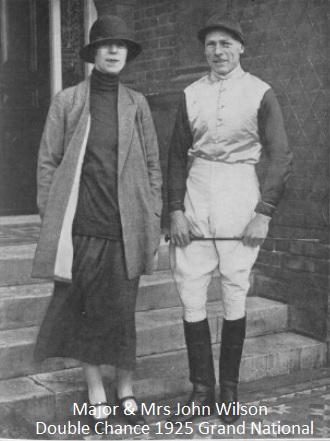
February 1924-April 1926 Frederick Charles Archer
Frederick Charles Archer, nephew of the great jockey and son of his brother Charles Archer, was born at Ellesmere House in 1882, assisting his father in the training establishment then wholly owned by his father. He held a Flat trainer's licence in his own right from June 1909 to 1913, and after the War he resumed his training career from 1919 up to his death in 1928. His training career was interrupted by the War in which he enlisted as a gunner in the Royal Artillery in early 1915, but was wounded at Gallipoli and ended the War as a lieutenant. Before the War he began training in Malton as private trainer to Sir John Thursby in May 1909 at Highfield, and by 1910 he had 11 horses, increasing to 15 the following year. He continued his training career at neighbouring Danby House up to early 1924, principally for Mr David C Goold of Liverpool and Captain Harry Whitworth. In February 1924 he moved back to Ellesmere House, remaining there until April 1926 when he succeeded Frank Barling as trainer to Lord Glanely, with Charles Marsh remaining as assistant in the Glanely yard. He trained the winners of two Molyneux Cups and the 1926 Wokingham, although is most important success was with Double Chance, jointly ownered by himself and David C Goold, who won the 1925 Grand National when ridden by Major John Wilson.
1925 Grand National at Aintree DOUBLE CHANCE 100/9 owned by David Goold and Fred Archer, trained by Fred Archer and ridden by Major John Wilson
1926 Wokingham Handicap at Royal Ascot CAPTURE HIM 20/1 owned by Lord Glanely, trained by Fred Archer and ridden by J Thwaites
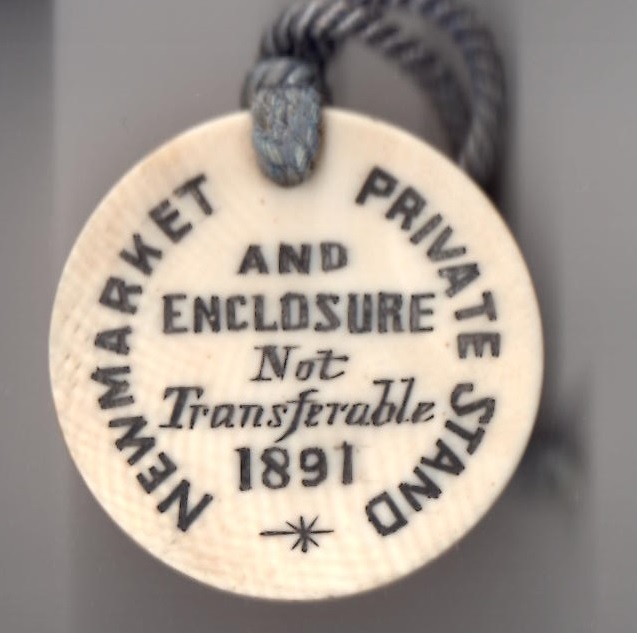
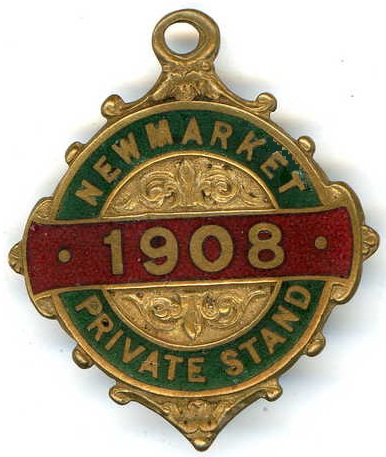
April 1926-Autumn 1949 Robert J Colling
Robert Jack Colling was born at Great Habton near Malton on 15 July 1900 and had his first ride in public aged just 11 when partnering Judge Peter in the Clifton 3-y-o Handicap at Thirsk on 3rd May 1912, but finished down the field. He enjoyed a brief riding career on the Flat, guiding Blink into third place in the 1918 2000 Guineas behind the brilliant Gainsborough (SR 2116) and was then runner-up in the New Derby at Newmarket behind the same horse. As weight increased it became obvious that life as a Flat race jockey was not possible and he briefly switched to jumps. After the war he was released from the Army at the beginning of 1919, and in February was appointed private trainer to Mr C T Garland, a rich American banker who had become a British citizen in 1914 and served in the ranks. Although Colling began training in Malton, Mr Garland then rented Hackness Villa from Martin Gurry in Summer 1919, which at that stage stretched to 14 boxes. Unfortunately, Mr Garland died suddenly in June 1921 but he left his Scaltback Stud to Bob Colling and he switched to Scaltback, remaining there until April 1926. In April 1926 he transferred his string to Ellesmere House, replacing Fred Archer, and remained there for the next 23 years. During his time at Ellesmere House he excelled with sprinters, especially Bellacose and Portobello. The former won back-to-back July Cup wins in 1935 and 1936, and the Nunthorpe Stakes in 1936. The latter won the 1938 Windsor Castle Stakes, following up a year later in the Nunthorpe Stakes. In November 1949 he sold Ellesmere House and the Scaltback Stud 2 years later, which he had inherited, and which consisted of 140 acres and 64 boxes. Colling moved to Hodcott House at West Ilsley as trainer to Lord Astor and his friends in late 1949, celebrating a Classic winner in 1953 when Ambiguity, owned by Lord Astor, won the Epsom Oaks. Ellesmere House was bought by Bobby Jones, who had previously been based at Phantom House.
1918 2000 Guineas at Newmarket BLINK 100/6 owned by Major W Astor, trained by Alec Taylor and ridden by Robert Jack Colling, third behind GINSBOROUGH (SR 2116)
1918 New Derby at Newmarket BLINK 100/8 owned by Major W Astor, trained by Alec Taylor and ridden by Robert Jack Colling, runner-up behind GINSBOROUGH (SR 2116)
1919 Ribblesdale Stakes at Royal Ascot MILTON evens fav owned by C T Garland, trained by Jack Colling and ridden by George Colling
1932 Windsor Castle Stakes at Royal Ascot GENEROUS GIFT 100/9 owned by Sir J Barwick, trained by Jack Colling and ridden by Patrick Beasley
1932 Ebor Handicap at York CAT O'NINE TAILS 9/1 owned by Mrs Carruthers, trained by Jack Colling and ridden by Gordon Richards
1935 July Cup at Newmarket BELLACOSE 6/1 owned by P Dunne, trained by Jack Colling and ridden by Patrick Beasley
1936 July Cup at Newmarket BELLACOSE evens fav owned by P Dunne, trained by Jack Colling and ridden by Patrick Beasley
1936 Cork & Orrery (Diamond Jubilee Stakes) at Royal Ascot BELLACOSE 7/2 owned by P Dunne, trained by Jack Colling and ridden by Patrick Beasley
1936 Nunthorpe Stakes at York BELLACOSE evens fav owned by P Dunne, trained by Jack Colling and ridden by Patrick Beasley
1938 Windsor Castle Stakes at Royal Ascot PORTOBELLO evens fav owned by P Dunne, trained by Jack Colling and ridden by Patrick Beasley
1939 Nunthorpe Stakes at York PORTOBELLO 15/8 owned by P Dunne, trained by Jack Colling and ridden by Gordon Richards
1947 Great Yorkshire Stakes HIGH STAKES 9/4 owned by Lord Astor, trained by Jack Colling and ridden by P Evans
1948 Fern Hill Stakes (Sandringham Stakes) MARYLAND 25/1 owned by Lord Staverdale, trained by Jack Colling and ridden by P Evans
1950-February 1963 Robert A Jones
Robert Anjial Jones, born in North Wales on 14th May 1904, became a jockey like his brother Peter Jones, with Bobby joining Alf Sadler at Freemasons Lodge. The pinnacle of his riding career came in the 1922 St Leger when he partnered Royal Lancer, owned by the Earl of Lonsdale, to victory, although in the event he was to go on and win 4 more Classics. Tragedy struck in 1923 when brother Peter was killed at Bogside in October. In December 1925, when Bobby was based in Beverley, he married Helen Doris Cartwright, daughter of Joseph Dawson Cartwright, for many years Head Lad to Reg Day at Terrace House, Newmarket, and the happy couple had a daughter Silvia who later married jockey Willie Snaith. Unfortunately, Helen died in 1950, although Bobby later remarried. The next year Bobby was appointed first jockey to Lord Astor and the pair celebrated a classic success with Short Story in the Oaks. It was a further 6 years before Bobby rode another Classic winner, Orwell, in the 2000 Guineas. A dual Classic success came in 1939 with Galatea II in the 1000 Guineas and Oaks, and it was then time for Bobby to consider entering the training ranks at the start of the 1947 season. He sent out his first winner, Glory Din, at Beverley in 1947. In December 1948 it was announced that Bobby Jones, one-time jockey and successful Newmarket trainer, had moved his string of 27 horses from St Gatien Paddock Cottage, a facility he shared with Alec Waugh, to Phantom House, taking out a one-year lease from Major Beatty. During his brief time at Phantom House his stable star was Fair Coup who landed the Scurry Plate and Warwickshire Breeders Foal Stakes. In December 1949, once the lease had ended, he moved to Ellesmere House Stables where he was to remain for a considerable time. Bobby died in Newmarket on Wednesday 12th February 1969 aged 64.
1922 St Leger ROYAL LANCER (SR 1857) 33/1 owned by the Earl of Lonsdale, trained by Alf Sadler and ridden by Bobby Jones
1926 Epsom Oaks SHORT STORY (SR 1813) 5/1 owned by Lord Astor, trained by Alec Taylor jnr and ridden by Bobby Jones
1932 2000 Guineas at Newmarket ORWELL (SR 1996) evens fav owned by Washington Singer, trained by Joseph Lawson and ridden by Bobby Jones
1939 1000 Guineas at Newmarket GALATEA II (SR 1949) 6/1 owned by Robert Sterling Clark, trained by Joe Lawson and ridden by Bobby Jones
1939 Epsom Oaks GALATEA II (SR 1949) 10/11 fav owned by Robert Sterling Clark, trained by Joe Lawson and ridden by Bobby Jones
1949 Warwickshire Breeders Foal Stakes FAIR COUP 6/1 trained by R A Jones and ridden by Michael Beary
1949 Saxmundham Plate at Yarmouth JANE CRAIG 6/1 trained by Bobby Jones and ridden by Doug Smith
1949 Scurry Plate FAIR COUP 4/5 fav trained by Bobby Jones and ridden by Tommy Lowrey
1949 Craven Handicap at Glorious Goodwood REFUND 33/1 trained by Bobby Jones and ridden by Tommy Lowrey
1960-May 1962 Dave Thom
Dave Trenchard Thom, born on 13th July 1925 at Pollockshields on the outskirts of Glasgow, was one of 5 children. In 1941 he joined the Royal Marines to take part in the D-Day landings despite being just 16 years of age. He eventually reached the rank of Sergeant, and, once the War had ended, he fully immersed himself in the life of a racing stable, riding in point-to-point races and as a professional under National Hunt rules. His first winner was aboard Ocean Gem in a novice chase at Folkestone. David launched his training career at Exeter House in 1959, moving from there to Ellesmere House in 1960, while in 1962 he took charge at Harraton Court Stables, purchasing them from the Galpins. At that time he continued to ride professionally, although his final winner was on Whitehall Bloom for Peter Poston in a Uttoxeter Selling Hurdle. He enjoyed early success as a trainer, saddling Narratus to land the 1962 Great Metropolitan Handicap, while in 1963 Narratus won the prestigious Chester Cup. In March 1963 the UDC bought Ellesmere House which Dave Thom, of Harraton, was using the stables as an overflow, and two months later they demolished Ellesmere House on the fallacious belief that it was in the way of the link road. By 1969 it was a car park of sorts.
BELLACOSE (1935, 1936 July Cup, 1936 Nunthorpe Stakes)
NARRAGHMORE (1891 Irish Derby)
CALIGULA (1920 St Leger)
PORTOBELLO (1938 Windsor Castle Stakes, 1939 Nunthorpe Stakes)
DOUBLE CHANCE (1925 Grand National)



